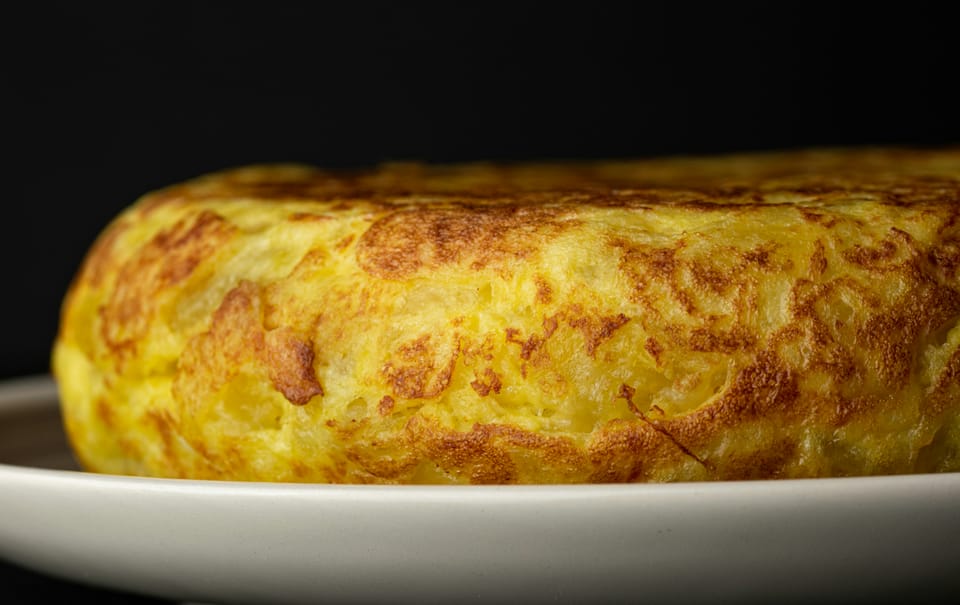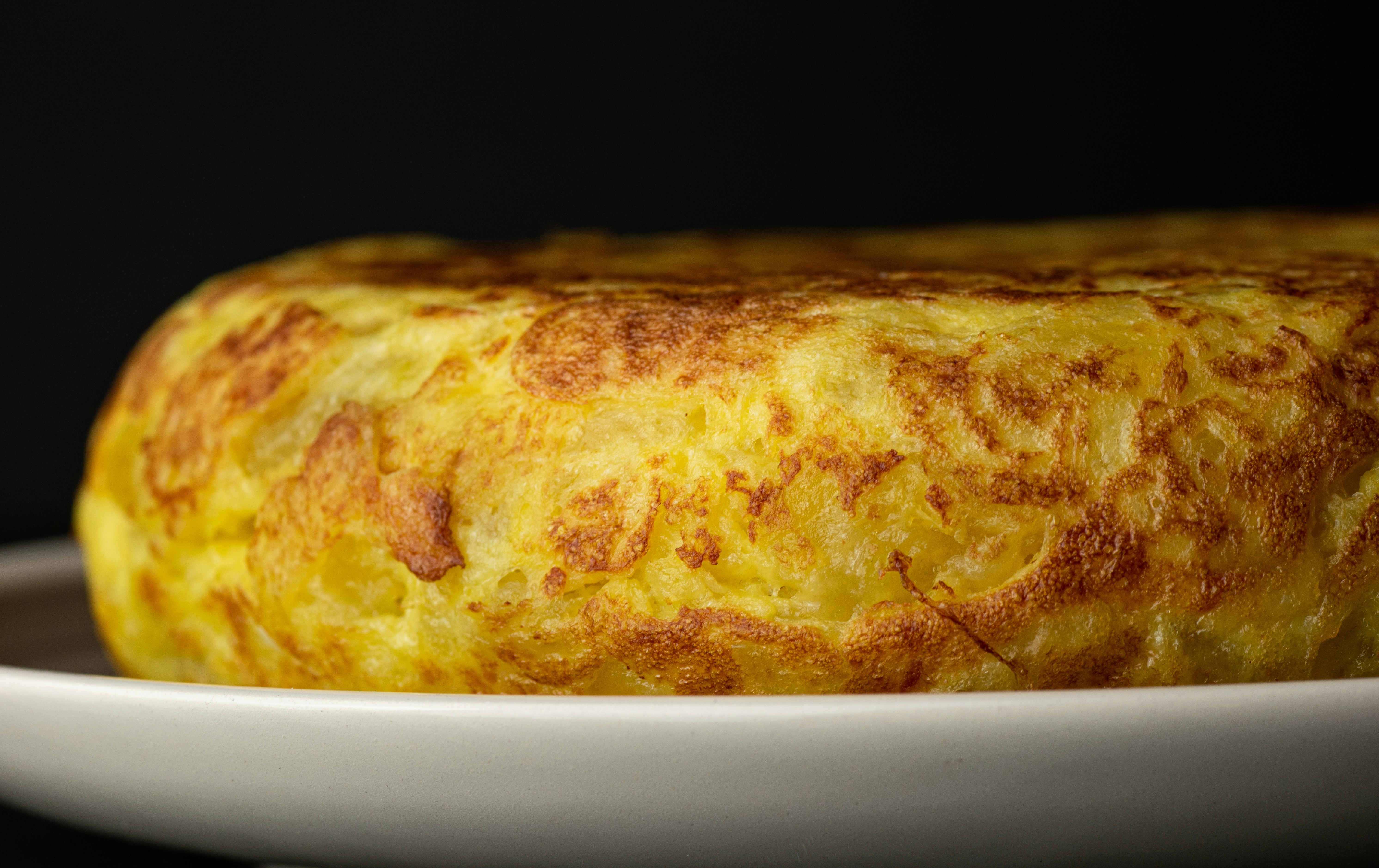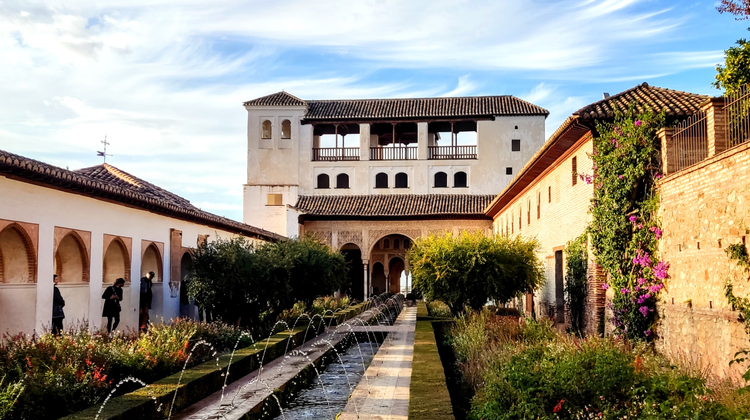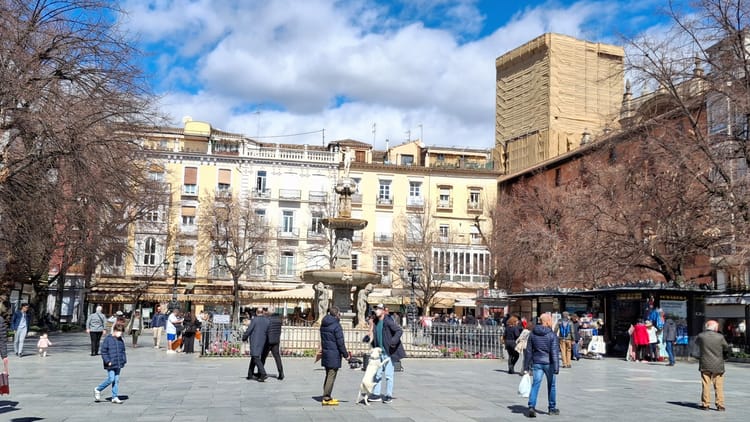In which we visit the egg shop


Rain slaps the pavement as I walk to the huevería or egg shop. My small umbrella with its pithy slogan is defenceless against the onslaught. While my black boots are waterproof, the soles are smooth and therefore slippery, so I watch where I step. But it's worth it, because every time I inhale there's nothing but petrichor.
I arrive first at the egg shop and wait under the awning next door. In general, I despise grocery shopping, but I love coming here because it's a remaining piece of village life in the centre of the city. A fluffy white dog wags at me from the doorway. I say hello, pat her and share a smile with her owner. The rhythm of the rain is constant and calming.
When my husband arrives the store is quieter than usual. It's long and thin, with an l-shaped counter separating the staff from the customers. The counter is packed with different types of eggs from local farms. We order 20 camperos or free-range eggs in a grey carton tied with pale pink string.
The store has shelves on the back wall with a small selection of local produce, including spices, honey and lentils. We order two litres of virgin olive oil and a packet of alubias pintas, which are small beige beans speckled with purple. The server tells us they’re soft because they've just arrived fresh from a local farm.
We debate whether to try the potato chips – it’s common to have a handful on the side of your plate with tapas. The server jumps in and recommends them because they're made in the same style that was popular when she was a kid. It doesn't seem like a sales tactic. I think she genuinely loves these chips, although that love is boosted by nostalgia.
Back home, we push the carton of eggs to the back of the kitchen counter. (A few weeks ago, our dog Skye got curious about the treasures to be found on kitchen counters. Normally, her claws tap-tap-tap on the tiles but this was her first foray into stealth mode. Standing on her back legs, she nosed a different carton of eggs on to the floor and started inhaling the yolk. Twenty broken eggs covers more of our kitchen floor than you'd imagine. I do not wish to repeat the experience.)
We try the chips and they're very moreish. The texture varies slightly throughout each chip as if it's been hand cut. They’re salty, thick and crunchy, and leave a sheen of oil on your fingers.
My husband starts making a tortilla de patatas or Spanish tortilla for dinner. The original recipe is simple: potatoes, eggs, olive oil and salt. Adding an onion is optional. For this version, he adds green peppers and smoked paprika for richness and some extra vegetable content. The traditional texture is quite wet (and not for me) so my husband cooks it a little longer. We plate the tortilla and add a dollop of the sriracha that he hunted down on the other side of the city.
The finished tortilla is delicious; recognisable but different enough to be its own thing. It's one of the best things about being an immigrant, that you can be inspired by traditions from your new home and yet add your own flavours to make something brand new.
What local experiences give you a sense of community?
What traditions have you embraced but then made your own?
Sketches from Granada celebrates every-day moments of connection with strangers, friends and ourselves. I know how easy it is not to be present in your life, and I hope these sketches inspire you to seek out the moments worth savouring in your own life.
If this post resonated with you, subscribe now to receive it directly in your inbox and keep this work accessible. And please share it with a friend you think might appreciate it too!



Comments ()